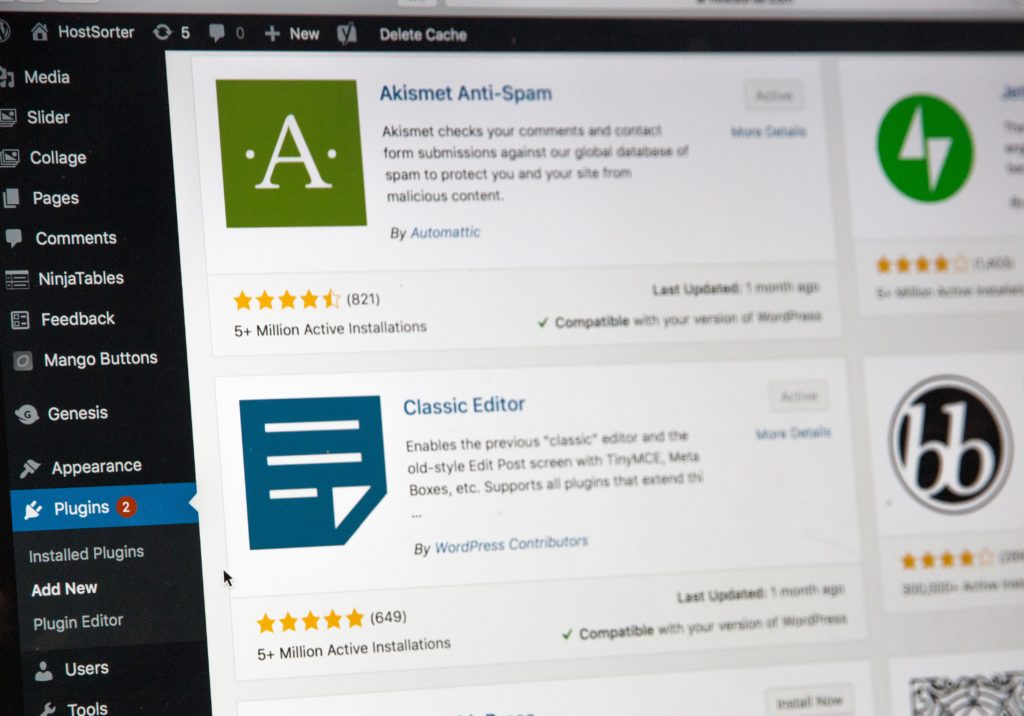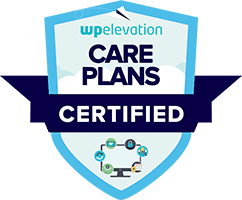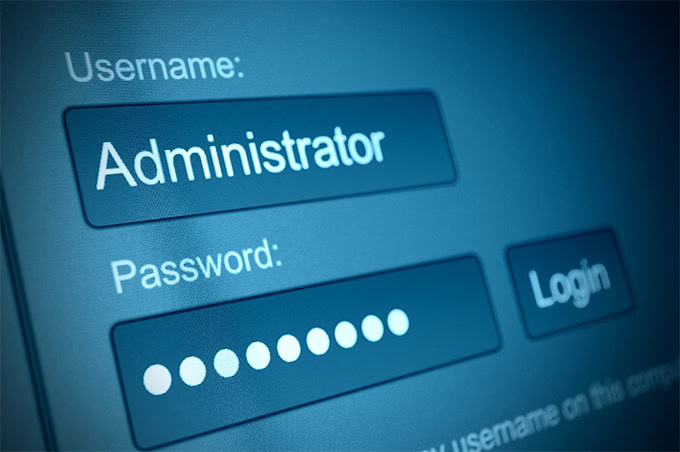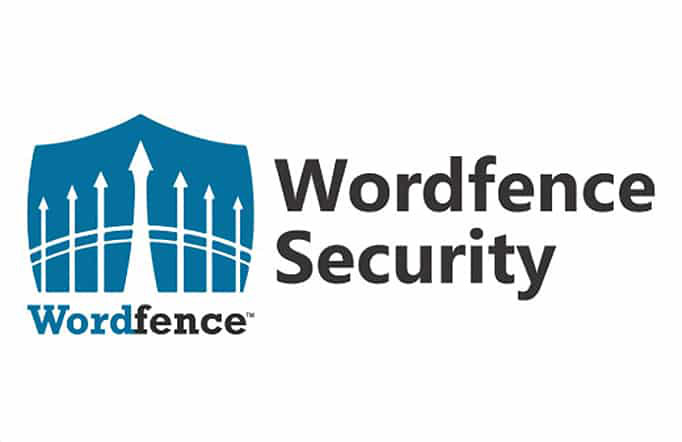Having a slow website isn’t fun for anyone. In fact, in today’s climate of impatient internet users, you may be surprised to find out that a website that takes ages to load may be doing more harm to your business than you might think. Consumers nowadays don’t have much of a tolerance for slow technology. Website speed may very well be the cause of lost online traffic or lower sales results – but, on top of that, it could be that a slow site may leave you getting punished by search engine rankings.
Let’s find out why page speed matters and what you can do to prevent slow load time!
This blog details the importance of website speed, and the effect a slow loading site may have on SERP rankings. If you need personalized advice on how to improve your website speed and fix your search engine rankings, reach out to Thrive Design today.
Don’t worry – understanding the logistics of website speed doesn’t require any sort of tech-savvy jargon or knowledge. Quite simply, page speed refers to the amount of time it takes for your webpage to load all its content. The quicker it loads and the easier it is to navigate all the different pages/links of your site, the more likely it is that you’ll be able to keep the attention of your online visitors. Even just a couple of extra seconds waiting for a page to load can lose you an endless number of potential customers. Nowadays, people value instant service, and a slow website can do a shocking amount of damage to your number of clients.
While most people would use these terms interchangeably, there is a difference between page speed and load time.
Google Page Speed is a score between 1 and 100 that considers a number of key website performance metrics. The tool will then offer suggestions on how to improve speed and overall site performance. This provides a great indicator of your site speed but doesn’t show you the exact time it takes for your page to load. To learn this, you’ll need to measure ‘load time’.
Load time is the average time it takes for your page to load. This is measured in seconds or milliseconds and shows how long it takes for the content to load between the time your user request comes in and the time the page finishes loading.
According to SEM Rush, 2 seconds is the benchmark for load time before people (and Google) start to lose patience. If your website is slower than this, it might be time to engage an SEO expert to improve your load time and page speed. If you’re struggling to break through with your SEO and your page load time is over 2 seconds – this could be the reason why!
You don’t have to stress over whether your website is up to par or not. Find out for yourself, right now! Google has a website available that can give you valuable insight into the functionality of your website and how speedy it is. Simply head to their page and insert the link to the site you want to test out, and get a better idea of what you may need to be improving on to be ranking higher on search engines.
So, what does a slow website have to do with Google rankings? Page speed happens to be a direct factor considered in SEO – meaning that a slow page speed could be impacting your ability to rank for your target keywords. This may seem daunting, but there are ways to find out whether your site speed may be letting you down, and lots of options to help get your site loading faster as soon as possible!
Does it look like your website might be a bit slow? Don’t panic! There are plenty of fixable reasons that your pages may not be loading as quickly as you’d like. Here are just a few easy things you can troubleshoot through to get your website loading faster:
Website speed is a simple thing that can make or break your digital marketing. Seeing your website slipping lower down the search engine rankings or failing to get the online traffic you desire can be endlessly frustrating, but there’s always plenty to be done. If you’re concerned about your website being too slow to best promote your business, take action today to get things back on track.
At Thrive Design, we’re ready to step in and use our expert knowledge to not just speed up your website, but help you climb those rankings and see the success you deserve. To get started, simply contact us today and get a quote for our services. Your customers will thank you!
Your website is like a car. Both should be reliable tools that help you in meeting your needs and reaching your goals. And, just like your car, regular website maintenance can help keep your website running smoothly.
Think about it. You don't let your car regularly run out of gas or oil. You check fluid levels and take it for regular maintenance. Your website should be run with that same basic principle. Namely, a little regular maintenance prevents a massive headache if things go wrong.

Your website maintenance routine doesn't have to be complicated or take up a lot of time. There are just a few maintenance tasks that you need to perform on a regular basis in order to ensure your website is running at maximum efficiency. (Trust us, your Google Analytics results will also thank you.)
We recommend adding these five tasks to your website maintenance schedule if you haven't already.

Every month, you need to carve out time to update and install any patches, bug fixes, or other regular updates that have been released for any and all software that your website uses. This includes your web server, database, operating system, content management system, and any other apps, plugins, or extensions you've installed.
While best practice is to install these updates when they are released, a scheduled monthly security check is a great way to make sure that no updates get overlooked.

You don't want your customers abandoning ship because of a slow loading speed, which makes Website Maintenance Tip #2 incredibly important. According to one report on website user experience, 52% of website users will abandon a website permanently if it loads too slowly.
A slow website leads to a higher bounce rate and lower conversion rate. Google has also added page speed as an element in their search engine ranking. There are many tools and plugins out there that will measure your website's speed for you. Our favorites are:
Related Reading: Top 10 Reasons Your WordPress Website is Running Slow

When you review your site analytics monthly, you will quickly get a good idea of what normal performance looks like so you can pinpoint when things are going wrong OR when something is going very right. Measuring key performance indicators (KPIs), looking at SEO rankings, and analyzing Google Analytics reports is the only way to stay on top of your site's performance. When done monthly, possible errors can more quickly be confirmed and resolved along with better benchmarks for future changes.

While some might recommend checking backups on an annual basis, most sites can change quite a bit in a short time which is why quarterly backups are a much better idea. This will minimize potential data loss in the case of a catastrophic event.
If you work with a hosting company that promises to back up your site for you, double-check that they are doing this at least quarterly. Otherwise, you can easily find a plugin that will help keep your site backed up and ready to go.
Related Reading: How to Back Up Your Website & Why It's Important

Typically sites post one copyright date across an entire site. This is done to clarify that content on that page and site are protected by copyright laws (at least in the United States). Generally, the copyright symbol is added along with the date of creation, but as websites are updated regularly it makes sense to also update the copyright date as well.
Another reason to keep your copyright and legal disclaimers updated annually is that the information you are required to disclose is constantly changing as new privacy laws are enacted at the state, federal, and international level. It's important to make sure that you are in compliance with all the laws your website is subject to and an annual audit is the best way to do that.

Broken links are a red flag for browsers visiting your website. They show that you're not actively involved in your website and make your site look neglected. A broken link on your site is like a run-down shed behind a lovingly cared for house. The shed might not be in use anymore but it creates an eyesore that people use to judge the house as a whole.
Checking for broken links, both internal and external, is a fairly straightforward task, since there are a number of web-based and stand-alone tools that perform this task. These tools can also check for images and external files that are no longer hosted on your site so don't load.
Your website is not a "set it and forget it" part of your business. While it doesn't have to be actively monitored 24/7, it also should not be left on its own. Google and other search engines are looking to promote sites that are secure, updated, and relevant. You can go a long way to nailing those first two with a regular maintenance schedule.
If you're interested in updating your site and getting help with maintenance services, Thrive Design would be glad to talk about how we can help revamp your website.
What's the first thing you notice about a website? It's not the company logo, the header image, or even the main call to action.
It's how fast the page loads. (Speed matters.)
Users don't want to wait long to get the information they're seeking. However, after clicking through 900,000 ads, researchers from Google discovered that the average mobile post-click landing page loads in an incredibly long 22 seconds. More than half of internet users will abandon those pages before they load.
You need your page to load within three (3) seconds in order to keep your users happy and hanging around. You also need a fast loading speed to have any chance of landing on the coveted first page of Google search results. The second page may not seem all bad but the majority of searchers never actually get there.

Before we go any further, let's talk about the difference between Google-measured PageSpeed and your webpage's load time. Despite how similar they sound, they are actually two different metrics measuring slightly different things.
Google PageSpeed, measured by the PageSpeed Insights tool, combines a variety of raw performance metrics and combines them into a score between 1 and 100. The Google PageSpeed Insights tool offers suggestions for improvements and diagnostics as part of its performance report. However, PageSpeed, on its own, is not a true indicator of the speed at which a page loads.
So if PageSpeed isn't the same as load time, what is load time? Load time is the average time it takes for a page to load for your users. Measured in seconds or, even better, milliseconds, the measurement starts when the user request comes in and when the page finishes loading. Of course, load time alone doesn't give an insight into what's causing speed issues and performance problems or how to fix them.

We've covered how to speed up your WordPress website in other posts, this post will show you how to improve your Google PageSpeed Insights score. You can get personalized tops by running your website through the Google PageSpeed Insights tool but these are a great place to start.
What are post-click landing page redirects? Let's take a look at three different pages:
Each time a user has to be redirected, rendering comes to a halt slowing down your website's performance and adding precious seconds to your page's load time. A responsive web design ensures a high-quality user experience even on mobile devices. (Google has also begun rewarding pages built with responsive design.)
Google testers have warned website builders repeatedly about the ways that images can affect page speed. The "weight" of your website is one factor that can impact your page speed and your Google PageSpeed Insights. Lots of code, lots of images, lots of extras make websites heavy and slow down loading time.
In this vein, graphic elements such as favicons, logos, and product images can easily comprise up to two-thirds of a page's total weight. Shrinking image size is one easy way to help your website shed some of this weight. This process is known as "image optimization."
It's a good thing that image optimization is pretty easy. Replacing a JPEG image with a PNG image file is the easiest way to shrink your image size and speed up your loading time. There are also many online image compressors that make image compression easy.
Websites that have been redesigned and expanded often are bogged down by excess and unnecessary code on the backend. CSS files are often larger than they need to be as humans need spaces and carriage returns in order to understand what they're reading and writing and this size has a huge impact on your load time.
Computers, however, don't need this kind of content to understand the code. When you remove these unnecessary characters, spaces, and duplications, your page loads faster. Because of this, Google highly recommends taking the time to minify the code on the backend of your website, including all CSS, JavaScript, and HTML components.
Want to know the number one factor that can kill your website load speed? Poor hosting. While a cheap hosting plan may seem like a great deal on paper, you're actually making a huge trade-off. That low, low price comes with slower than normal site speeds and frequent downtime during high traffic periods.
To ensure lightning-fast performance, you need to invest in a premium hosting provider. Google PageSpeed Insights recommends a sub-200ms server response time. You're not going to get that with a cut-rate web host.
That's why we use Kinsta for all of our hosting clients. Kinsta ensures that your website's performance doesn't suffer no matter what time of day or what traffic to your website looks like.
Instead of dynamically generating your website's content every time someone clicks through, browser caching allows web browsers to quickly serve a static version of your website to users. This means that your PageSpeed is measured by the time it takes to serve this static version while the dynamic version continues to load, shaving valuable milliseconds off your load time and improving your PageSpeed Insights.
If you are using WordPress, there are many free, popular plugins that you can use for this purpose including W3 Total Cache and WP Super Cache.
Not only will these measures help your PageSpeed Insights score, but they will also help improve your conversion rate. Researchers found a correlation between load time, page weight (size in data), and conversion rate. Basically, “heavier” means slower, and slower means fewer conversions and a higher bounce rate.
A website that's faster and has reliable performance will convert significantly more users than a website that is not. PageSpeed Insights can help you figure out where to focus your attention to help improve user experience no matter what device your audience is using.
 When was the last time you backed up your WordPress website? Do you even remember or do you rely on your website hosting company to do that for you?
When was the last time you backed up your WordPress website? Do you even remember or do you rely on your website hosting company to do that for you?
If you don't already know how, learning how to back up your WordPress website is something that you should add to your to-do list. Knowing how to perform a manual backup of your website will help you prevent future heartbreak.
Trust us when we say that, while learning this process may not seem urgent, you'll want to figure it out sooner rather than later. You never know when disaster may strike.

Your WordPress database contains every post, every comment, and every link on your blog. It contains every product listing, all your webpage text, and every photo and image you have on your site. If this database gets erased or corrupted, you could lose everything, much of which is next to impossible to replicate.
Backing up your website is simply making a copy of your site that you can reinstall if anything goes wrong. This precautionary measure can save you a lot of undue stress if anything goes wrong. Think of your backup as an insurance policy that protects all the time, effort, and money you've invested in your website.
Lots of things can happen to corrupt or destroy your database, much of which is out of your control. When your site is properly backed up, you can quickly and easily restore your content whenever needed. If you don't have a website care plan, it's worth your time to spend a few minutes on a regular basis making an easy, convenient backup of your database so you're prepared if it ever needs to be replaced.
Related Reading: Why a Care Plan is Essential for the Success of a WordPress Website

When you're preparing to back up your WordPress website, you need to first understand that there are actually two parts that you'll need to download and dave. The first part is your website files. This includes your theme and plugins, scripts, and media files that make up the structure of your website and provide the functionality. The second part is the MySQL database that stores your blog posts, comments, and the other options you set in your WordPress admin area.
There are two ways you personally can ensure your website is properly backed up: manually and through plugins.
The process for manually backing up your website is relatively simple and straightforward. The first thing you need is direct access to your web server. You can get this through a hosting account file manager or an FTP such as FileZilla. If your server is configured properly, you just need access to the public.html folder.
To fully backup your WordPress site files, copy and download the wp-content directory and the wp-config.php file. These are the files that contain everything that makes your site unique: plugins, themes, and configuration details. The rest of the files in that folder are included in every WordPress installation so you'll have access to them the next time you install WordPress.
For the next step, you'll need to have a database management tool such as phpMyAdmin. To download the MySQL database file, use the Quick Export option from your tool's Export tab, keep the SQL output format and click download.
Once you have these files downloaded, the safest thing you can do is to upload them to your cloud storage of choice. The best way to organize these files is to create a new folder labeled with the date of the backup and store all the files from that date in that folder. That way, you'll know which files are the most recent and can easily restore your website to a specific version if needed.
There are two plugins that we recommend to clients who are looking for an easy way to automatically back up their website.
Related Reading: Six Best WordPress Sitemap Plugins for 2021

The answer to this question depends on how often your site changes. If your site is relatively static, meaning you don't update the content that often, daily backups aren't necessary. You could probably even get by with monthly backups.
However, if you have a site with an active blog and a community of readers who leave comments, you're going to want to backup every day so none of that content gold gets lost in any future restores.
As for eCommerce sites, you'll want a real-time backup solution so that you don't lose any order data in the event of a restore.
So how do you decide what backup schedule is best for you and your business? Easy. Fill in the blank on the following prompt:
If I lost data from the last _____________, my site would be negatively affected.
Whatever timeframe you specified should be the timeframe of your backup schedule. When you're determining what that timeframe is, remember to think beyond how often YOU create content and consider how often your users create content. Whether that's orders in your store or comments on your blog, that is also content you need to be able to restore.

Related Reading: How to Move Your Website to a New Host
Unless you are using a premium managed WordPress hosting provider such as Kinsta, WP Engine, or Flywheel, you are going to want to back up your WordPress site yourself. Most cheap hosting providers will only backup your MySQL and it can be a pain to request a copy of that backup when you need it. (Some cheap hosting providers will take days to get that copy to you.)
With our website care plans, we proudly offer hosting services through Kinsta for this exact reason. Our daily backups of your site mean we can restore your site to normal with minimal downtime. And with multiple backup locations, your site's data is guaranteed to be available when you need it.
—
Thrive Design is a customer-centric web design and development company from Seattle. Contact us today to find out how we can elevate your business online! Find us on Clutch, UpCity, LinkedIn, Facebook, and Twitter.
Once you’ve built the website of your dreams, it’s important to ensure it’s taken care of properly. You wouldn’t buy a car without auto insurance and take it in for maintenance and oil changes. And that’s what one of Thrive’s care plans is: insurance and care for your investment.
So let’s talk about what a website care plan is, why it is essential to your business, and what we include in our care plans here at Thrive.

A website care plan is a set of bundled services that we use to keep your website operating in tip-top shape. These services include security, performance, backups, monitoring, malware protection, and more. Depending on the package you choose, we even will fix broken links and update your content. All of this is essential to make sure that your customers can find you, hire you for your services, buy your products, and generally keep you in business.
You could take care of all of these little bits and pieces yourself. You could find different contractors to take care of it all. OR you could trust us at Thrive knowing that we’ve spent countless hours researching these services and honing our skills at keeping websites up and running.
You’ve spent a lot of time and money building the best website design possible. A website you’re proud of. A website that generates leads and brings in customers. A website that looks and performs great. A care plan ensures that your website continues performing the way you need to keep business flowing as usual. The cost of a monthly Thrive website care plan is a small investment to make to ensure smooth operations.
See Related: Web Design vs Web Development
There are a lot of things that go into keeping a website running behind the scenes. We’ve outlined each element that goes into the different levels of our care plans on our “Website Care Plans” page. Let’s take a more in-depth look at these elements and why we include them.

 WordPress has more than 56,000 distinct plugins in their repository. These are little pieces of software that enhance the WordPress experience, but it’s important to make sure that they are updated every week. Most of the time Thrive spends on care plan services are in updating these plugins and ensuring that everything works fine after those updates. And this takes us to the next item on our list.
WordPress has more than 56,000 distinct plugins in their repository. These are little pieces of software that enhance the WordPress experience, but it’s important to make sure that they are updated every week. Most of the time Thrive spends on care plan services are in updating these plugins and ensuring that everything works fine after those updates. And this takes us to the next item on our list.See Related: Why Is Web Design Important?
For the majority of our clients, our website care basics plan covers what they need. However, there are some clients who have a lot of different changes they want to be done on their website. For them, we have an unlimited care package. This package includes everything listed above in addition to:
Your website is not something you can set and forget. Cybercrime is on the rise. Updates and vulnerabilities happen every day. Plugins fail. Hosting services crash. A thousand things can go wrong. A dedicated web team is one way to ensure your website performs safely, securely, and predictably. An easier way is to invest in one of Thrive’s website care plans. Contact us today to see how we can help keep you up and running, no matter what.
—
Thrive Design is a customer-centric web design and development agency from Seattle. Contact us today to find out how we can elevate your business online! Find us on Clutch, UpCity, LinkedIn, Facebook, and Twitter.
Today there are about 60 million WordPress websites. WordPress commands a 60% market share of all content management systems crushing their 5 competitors who combined have a market share of16% (Joomla, Drupal, Shopify, Wix, and Squarespace).
As with Windows (with a 78% desktop OS market share), this popularity comes with a price. Those zombie computers across the interwebs are searching for vulnerabilities day and night. It isn’t even hackers anymore. Hacking these days is set on autopilot.
Having such a big target on WordPress's back is exacerbated by one glaring issue in its platform: the use of 3rd party plugins.
Plugins, in my opinion, are both the best and worst part of the platform only because of stability and security issues.
However, the security threats can be mitigated by having a well thought out strategy to monitor and update your plugins weekly.
As of September 2019, there are 55,133 WordPress plugins available in the market. According to this report published by Imperva, only 3% of these plugins were added in the year 2018. This means the vast majority of plugins are old and most have not been updated in years (or ever).
In fact, 70% of all WordPress websites are vulnerable right now. A plugin becomes insecure when a vulnerability is found within code it is written in (PHP). New versions of PHP are being released every year and the plugins fall behind in their security.
This isn’t just an issue with WordPress. All code must be monitored and updated in order for it to be secure. It just so happens that WordPress is the #1 target so we must take extra care.
Every week we receive notices of vulnerabilities found in new plugins. For example, Forbes released an article in August 2019 titled Critical 'Backdoor Attack' Warning Issued For 60 Million WordPress Users
Another one just today (9/19/2019) exposed a vulnerability in a piece of software installed on tens of millions of WordPress installations.
When it comes to WordPress security, you have to be proactive. Such measures include:
The worst possible thing that could happen to your website is a deletion without a backup.
I receive a call about once a month from a potential client whose website has gone completely down. Sadly, about 25% of them do not have a backup.
The first thing we do as a company when taking on a new client is reviewing their backup system. We must have a daily backup in case we need to restore the website.
Don’t get yourself into the scramble of having a hacked website with no backup.
There are three crucial aspects of your backups.
As a business owner, it should be your utmost priority to keep your website safe and secure. No matter which hosting company you opt for and how much security it guarantees you, the ultimate burden of the security of your site rests on your shoulders.
First and foremost, you should install a security plugin such as WordFence. It will help you in making your site safe and secure.
Second, if you are outsourcing your website development, make sure that you keep control of password management in your hands. If anyone other than you want to access your site, make sure that they have different login credentials that can be deactivated by you anytime you want to.
Third, make sure the user “admin” does not exist on your website.
These are just the basics but they will get you started.
Your WordPress site like ar car. If you want it to function well, you have to take care of it. This requires time every week and it is worth it. Protecting yourself by routine maintenance is always many times less expensive than a cleanup job.
As part of your website’s regular maintenance, you should take care of the following items:
When it comes to web hosting, numerous options are available and they come down to 2 types: shared and managed.
Shared hosting is absolutely the cheaper option, but you end up paying for it in the end with the degradation of performance, security, uptime. This is because thousands of websites can be located on a single server. If anything goes wrong with any of the sites on the server, your site could suffer too. This causes the websites to load at a snails pace and it is common to have mail deliverability issues from the website as they share the same IP address.
We believe so strongly in the benefits of managed hosting that we do not work with clients that are on shared hosting.
We feel that shared hosting is expecting someone to be a stellar runner when all you feed them is junk food.
I know that businesses are always looking out for ways to save money, but trust me, this is the last thing you should be saving out money on.
You can, but we don’t recommend it.
A plumber is skilled in changing faulty pipes. A chef is proficient in cooking. An architect is adept at sketching building structures. Likewise, you are good at managing your business. Instead of focusing on your core business, if you will start looking after your website, you will need to become an expert at this or items will slip through the cracks.
You have a business to run and outsourcing items like this allows you to focus on working on your business and not “in it”.
However, if you do go with the DIY approach be sure to have a schedule for your plugin updates, security scans, 24/7 monitoring, and daily backups and follow the above recommendations.
If you are looking for a rock-solid host, we highly recommend Kinsta.
If you get stuck and are looking for a company to take care of your security and hosting (we also use Kinsta), then check out our Care Plans.
—
Thrive Design is a customer-centric web design and development agency from Seattle. Contact us today to find out how we can elevate your business online! Find us on Clutch, UpCity, LinkedIn, Facebook, and Twitter.
There are many, many hosting options for your website and Thrive is one more. Hosting companies run the gamut in cost, service levels, and customer service. It’s hard to know which to choose, and which features or services benefit you the most. When you know what we offer in comparison to all the others, though, we're confident you’ll agree we offer a superior service.
We, of course, believe that our hosting package is stellar. Here's why:
We already help you with your website, SEO, and/or online brand management needs. Why not include hosting, too, for far less hassle? You won’t have to look up a new number or search in vain on an unfamiliar website to get to the support form. In cases of an emergency, like your site is down, you won’t have to bring anyone new up-to-speed on the inner workings of your website because we know your account and your site. Our team is also based in Seattle, Washington; you won’t be bounced to a call center in another country where a language barrier could hinder a quick resolution to the issue at hand.
Our hosting service is run by a group of folks who do nothing but oversee hosting servers. This is their actual job. The support staff of even the largest web hosting companies are very low-level support whose job is to act as gate-keepers, simply taking down information as needed - sometimes through many phone calls and emails - keeping the professionals as far away from clients as possible. It takes a lot of time and effort to get to the people who actually monitor and resolve web hosting issues. Our hosting service doesn’t operate in this matter. We work with the folks directly responsible for keeping your site live on the web.
Most hosting companies offer very minimal backups included in their hosting package, if any at all. Some are daily, but are overwritten each day so there’s only a single copy of your site. If an issue exists on your site for more than 24-hours, you’re out of luck hoping to restore the site to a clean version. Some companies backup just once a month. So, if you’ve made any changes at all in 30 days, restoring to a backup will lose everything you entered. Still others (many others) require you to do your own backups - it’s not even a paid add-on. Our hosting service backs up your site every - single - day. And, we keep backups for 90 days.
Your site is monitored for hosting issues 24 hours a day. No breaks for the weekend, or holidays. Any alert solicits an immediate response - the 24/7 professional support staff tirelessly works to resolve the issue as quickly as possible. Their monitoring system is so sophisticated and fast that many issues are resolved before anyone outside the hosting team is aware of them.
Because of the 24/7 monitoring system and dedicated team of professionals, we can boast of 15-minute response time, when using our Support Form and selecting the option of "Website Down" from the drop-down menu. A quicker response, by the people responsible for maintaining your site hosting, is a service virtually unmatched anywhere else.
Our server is built to solely host WordPress sites, nothing else. Our team has to be experts not only in hosting issues but also with WordPress. It’s optimized to be the fastest and most secure hosting option available to WordPress users.
You’re not sharing hosting space with hundreds of sites - any of which could be infected to the point where it brings down the entire server. We have our own server, for our own clients, and that’s it! Combined with our monitoring system, professional support team, and security monitoring, we can offer one of the most secure servers around.
Hacker-free security is brought to you by a hard-working team. Since it’s hosting dedicated to WordPress sites, our team is up-to-speed on vulnerabilities as they develop and they work quickly to eliminate them from being a threat. And, as an added bonus to our clients who both host with us and are on a Care Plan, if any malware is discovered on your site it is immediately removed at no charge.
There you have it, our most compelling reasons for hosting with us. There are a bunch more, but we don’t want to bore you with our geek-speak. Sounds pretty great, doesn’t it? Contact us today, to host your site with us. (And, if you want the geeky information, we’d be thrilled to share!)
View our WordPress hosting packages.
—
Thrive Design is a customer-centric web design and development agency from Seattle. Contact us today to find out how we can elevate your business online! Find us on Clutch, UpCity, LinkedIn, Facebook, and Twitter.
Just like your phone and your computer’s operating system, your website requires maintenance. Every month it seems my phone and computer require a major software update. Your WordPress website needs the same care and attention so it can be online all the time to showcase your products & services.
Hackers target WordPress more than any other online platform. WordPress has a 60% website market share of content management systems and 52,000+ available plugins that can be hacked. It is just too big of a target for hackers to ignore.
When a WordPress website is hacked, it isn’t even humans behind a computer doing the work. Most of the time it is an autonomous computer script that finds the vulnerability in an outdated WordPress plugin, theme, or even WordPress itself.
The top 3 goals of hackers are to steal sensitive information, install software that infects visitors with a virus, or send spam through your website.
When a website is hacked, it must be cleaned or restored from a backup. Unfortunately, most cut-rate hosts limit backups to 30 days or put the responsibility of backups on you. This includes GoDaddy, Bluehost, and Hostgator.
Shockingly, 70% of all WordPress websites are vulnerable right now. Read this article for more stats about WordPress vulnerabilities. If you are a significant data nerd, check out Sucuri’s annual report with a complete breakdown of all hacked websites in 2017. (Not) fun fact: 83% of them were WordPress.
Many people don’t know what a care plan is, let alone what it contains. Here is what we at Thrive provide as part of our basic care plan.
Maintaining a website is more complicated than one would think at a close glance. Updating a site directly from the WordPress admin doesn’t store a record of what was done. If an update to a plugin created an issue down the road, it would be difficult to know what changed and how to revert without restoring an ancient backup and losing content changes, sales orders, form submissions, etc.
Care Plans are one of our core services. There’s no panic when there’s a plugin conflict during an update or a tricky issue to debug. We’ve seen it all. Over the years, we’ve received calls from people with broken websites and incomplete backups. Often, the cost of a whole year of a Care Plan is needed to fix the issue when there is no complete backup. Just like a car, it costs more to fix it than it does to maintain it properly. Regular oil changes help keep your car running smoothly, and regular website care helps keep your website purring at optimum performance.
Why not focus on your business and let us help you with what we know best? Would you change the pipes in your bathroom or call a plumber? Then why try to maintain your website if that isn’t your trade? By securing an experienced WordPress company to care for and support your site properly you are saving potential lost revenue and customers.
Secure a Care Plan for your website! Contact us to learn how we can keep your site in proper working order.
We are certified as Care Plan experts through WP Elevation, the world's most accredited WordPress training company.

—
Thrive Design is a customer-centric web design and development agency from Seattle. Contact us today to find out how we can elevate your business online! Find us on Clutch, UpCity, LinkedIn, and Facebook.
Few things make me feel worse than a hacked website without a backup. WordPress security is not something many website owners think of but with over 32% of the internet using the technology it is the biggest target out there.
WordPress is great but it's not perfect. If you aren't diligent about your security protocols, it's like putting a target on your back. Here are some common mistakes we find among our new clients.
If the worst should happen, having a recent, clean version of your website is the easiest first step in getting back to normal.
Did you know that over 70% of hacked WordPress websites are due to outdated/vulnerable software?
This is the default username for all WordPress websites, meaning it's the first thing that bad actors will guess when trying to hack your website.
Cheap hosting sites aren't performing the necessary checks frequently enough to keep you as safe as possible.
These two items are crucial for knowing when your website is working...and when it isn't.
We cover security, backups, hosting, and many other services as part of our website care plan.
—
Thrive Design is a customer-centric web design and development agency from Seattle. Contact us today to find out how we can elevate your business online! Find us on Clutch, UpCity, LinkedIn, Facebook, and Twitter.
Websites are hacked by autonomous machines these days... not by humans hacking individual sites. These machines (aka bots) search the internet for vulnerable websites day and night.
We get calls every month from people whose websites got hacked. If you own a WordPress website, I have some very specific things you can do to protect yourself.

Don’t assume your web hosting does this for you. Many hosting companies do not and, if they do, they charge you to access it and it typically only goes back 30 days.

This is the #1 reason for hacked WordPress websites and it’s simple to do. You just need to have diligence when doing it. Check out our Care Plans, as we do not recommend a DIY approach.

That is what WordPress comes with out of the box and it should be changed immediately. Create a new administrative level user and delete "admin."

A password should be so secure that it’s impossible to memorize. Think lots of special characters and uppercase/lowercase combos.

Use WPS-Hide Login plugin to do just that!

There are way too many options to talk about here. Wordfence audits your website security, lets you do virus checks, and even lets you block whole countries from viewing your website.

Instead, create a separate administrative login for trusted developers to use. That way you can turn it off.
—
Thrive Design is a customer-centric web design and development agency from Seattle. Contact us today to find out how we can elevate your business online! Find us on Clutch, UpCity, LinkedIn, Facebook, and Twitter.
People often ask me why anyone would want to hack their website. There are three main reasons why they want to breach your security.
Let Pingdom do that for you. It's easy to sign up for a free account that will monitor your website.
First, contact your web host or the web developer in charge of your website. You'll need your host login to do this. From there, open up a ticket saying your website is not loading and include a screenshot. For faster action, give your host a call. Just be prepared to wait in line unless it is a managed hosting company such as Kinsta.
We cover security, backups, hosting, and many other services as part of our website care plan.
—
Thrive Design is a customer-centric web design and development agency from Seattle. Contact us today to find out how we can elevate your business online! Find us on Clutch, UpCity, LinkedIn, Facebook, and Twitter.